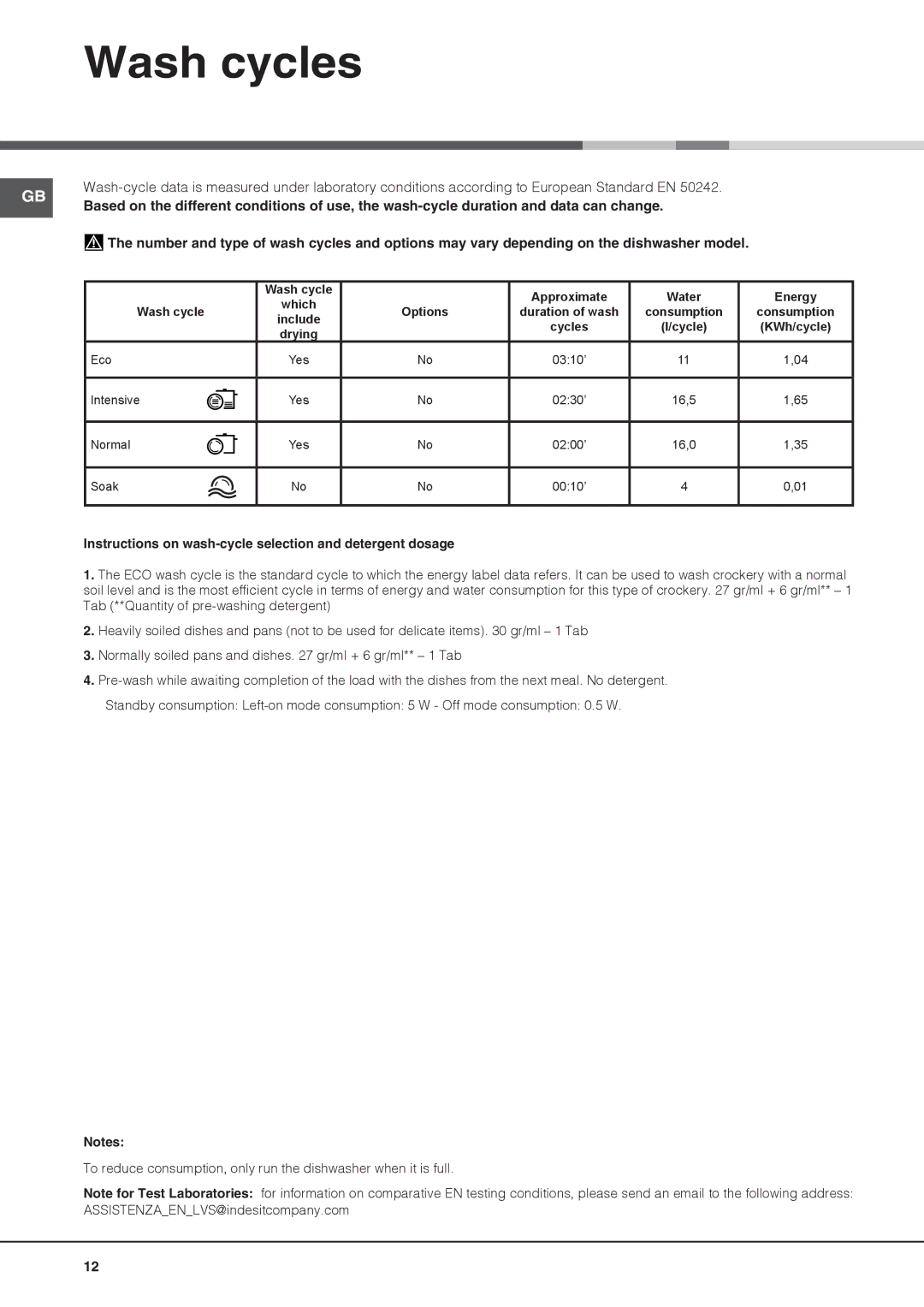
Wash cycles
GB |
| |||||||
Based on the different conditions of use, the |
| |||||||
|
| |||||||
|
|
| The number and type of wash cycles and options may vary depending on the dishwasher model. |
| ||||
|
|
|
| |||||
|
|
|
|
|
|
|
|
|
|
|
|
| Wash cycle |
| Approximate | Water | Energy |
|
|
|
| which |
| |||
|
|
| Wash cycle | Options | duration of wash | consumption | consumption | |
|
|
| include | |||||
|
|
|
|
| cycles | (l/cycle) | (KWh/cycle) | |
|
|
|
| drying |
| |||
|
|
|
|
|
|
|
| |
|
| Eco | Yes | No | 03:10’ | 11 | 1,04 | |
Intensive
Yes
No
02:30’
16,5
1,65
Normal
Yes
No
02:00’
16,0
1,35
Soak
No
No
00:10’
4
0,01
Instructions on wash-cycle selection and detergent dosage
1.The ECO wash cycle is the standard cycle to which the energy label data refers. It can be used to wash crockery with a normal soil level and is the most efficient cycle in terms of energy and water consumption for this type of crockery. 27 gr/ml + 6 gr/ml** – 1
Tab (**Quantity of
2.Heavily soiled dishes and pans (not to be used for delicate items). 30 gr/ml – 1 Tab
3.Normally soiled pans and dishes. 27 gr/ml + 6 gr/ml** – 1 Tab
4.
Standby consumption:
Notes:
To reduce consumption, only run the dishwasher when it is full.
Note for Test Laboratories: for information on comparative EN testing conditions, please send an email to the following address: ASSISTENZA_EN_LVS@indesitcompany.com
12
